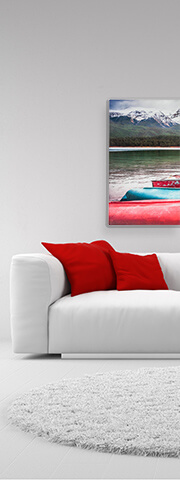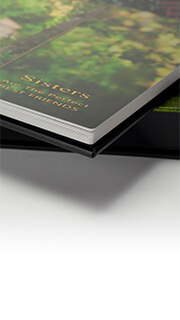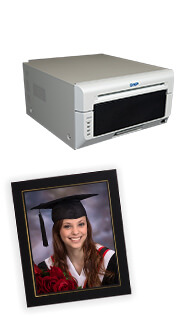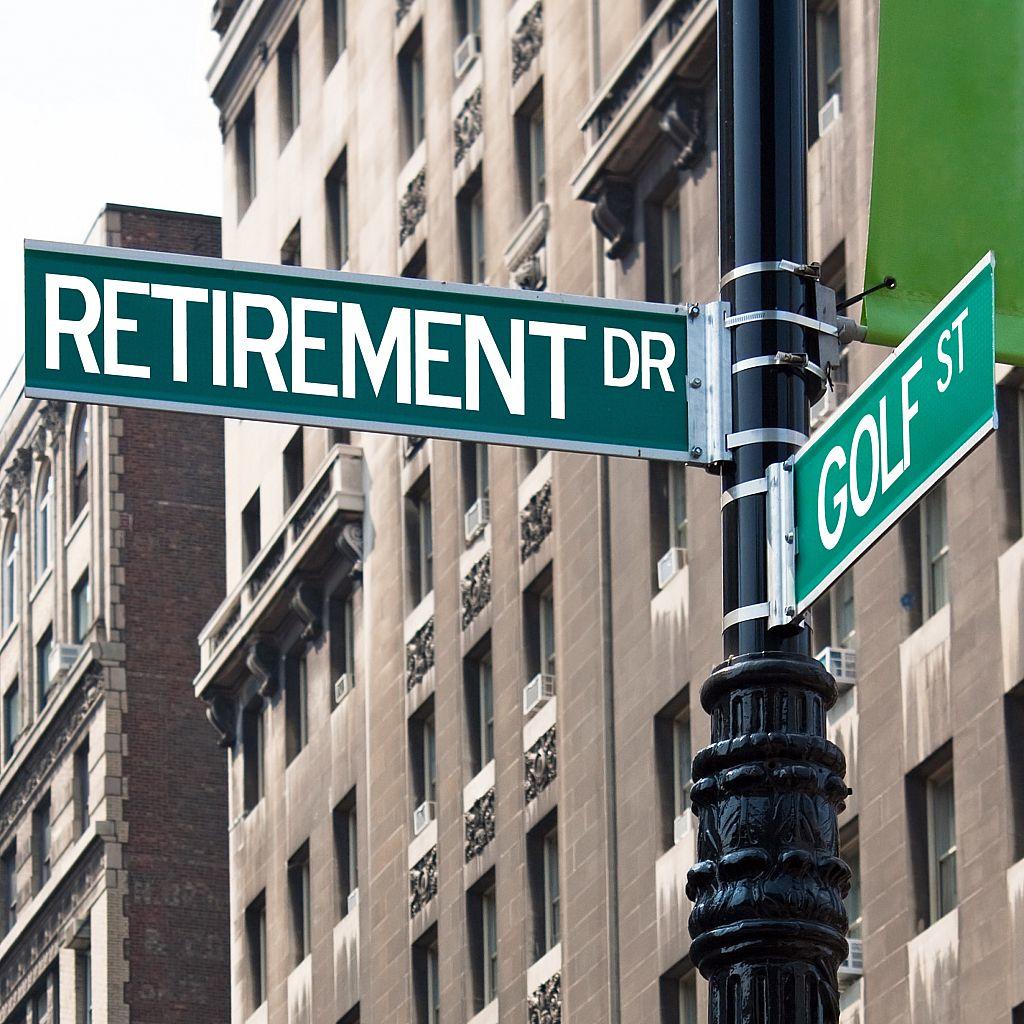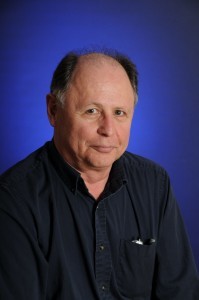
We would like to extend our best wishes to Tim Ryan and his wife Anne Gray. Congratulations on your retirement. We asked Tim to share a few words with us on his time with Technicare. Tim founded the company 30 years ago and was kind enough to share his experience through the years. Please take a moment to read his story.
It feels like yesterday…
As I prepare to retire it’s difficult not to look back at the last 50 odd years.
I have been in the photographic business all my working life. I inherited my father’s Rolleiflex gear when his eyesight began to deteriorate, and at 14 was shooting banquet and event coverage. It was black and white then 80 ISO Plus-X, and I processed my own film and delivered prints the next day to the photoengravers.
Photography and electronics were what interested me as a very young man. Freelancing (and poker) kept me in pocket money in high school and paid for the electronics hobby as well.
Above all else, I wanted to be a cinematographer. In 1971 I got the break I wanted to start at the bottom as the junior cameraman and lab tech at CKRD television in Red Deer, Alberta. As the junior guy, I was responsible for equipment maintenance, lab work, and whatever the rest of the staff didn’t feel like doing. I didn’t know it then but what I learned there would follow me for most of my days.
In ‘71 it really was “film at 11:00”, and God help you if the day’s shoot was not processed properly and cut for air by 9:00 pm. We shot and processed 16mm B&W reversal film for local news and color reversal with a sound stripe for commercials and promotional material. I learned the ins and outs of the TV news and advertising production system. Just as I began to feel that I had mastered this, technological change was about to deliver the first really nasty shock to my career plans. It didn’t feel like it at the time but it was the defining lesson of my early career and one that has served me well to this day.
Don’t ever get comfortable or complacent because if you do the changes you don’t see coming will drive your career/business into the ditch. Always be paying attention to what’s coming over the next hill, and be looking at how it will affect you and those around you.
My aspirations for a career as a cinematographer were derailed by a company called Sony, here’s how.
In the early seventies, wannabe cinematographers started at the bottom as I had. We ran Bolex and Auricon 16mm film cameras and processed our film in a basement lab at the station. It took skill to reliably deliver consistent film and processing that would make air the same day. Successful operators were skilled people and could expect a reasonable income. Staffing and the costs to do this were significant. In 1973 Sony presented an Electronic News Gathering system or ENG camera. No film, barely adequate quality, and supposedly “any mutt can run one of these”.
The members of the National Press Photographers Association panned it as inadequate and poor quality and a non-starter. The industry consensus was that ENG was crap. However it was the station owner who paid the bills, and he bought Sony’s somewhat overstated pitch on the cost reductions. So the owner says, “fire all these expensive cinematographers and get some ENG and low-cost staff in here”.
No one was more surprised than I to find myself unemployed, and what’s more unemployed in Alberta in the middle of the first OPEC triggered Oil Shock recession.
“Never ignore technological change, and always be looking for how change is going to affect you”.
Lesson learned, “Never ignore technological change, and always be looking for how change is going to affect you”. The other lesson was learned by the station owner who eventually realized that it took skill to run an ENG camera too, and the Sony salesman was long gone after the gear was delivered and he collected his commission. That one took a while to sink in.
In the meantime, in the winter of 73/74, I got my first and last experience with UI when the only available employment was working on a retail camera counter. This was a depressing come down from being a TV cameraman.
However, no one was more surprised than I to discover that selling was kind of fun if it was coupled with providing something of value that worked well for the buyer, and I got to play with all the new toys as soon as they arrived. I guess I could live with this. What’s more, I could still freelance for cash, even if it did involve weddings and such.
By 1977 I was a retail photo department manager at a discount outlet. One of the Ilford sales reps that called on my employer took me to lunch. He explained that he was moving on to a new job, and had recommended to the Ilford Company to offer me a job covering their territory in western Canada. It was a game changer. I was to become a corporate road warrior, and only someone young single and maybe a little foolish would see this as an opportunity, but it was. The territory included the eastern half of BC, Alberta, Saskatchewan, Manitoba, North Eastern Ontario, and the North West Territories, in short everything that nobody else would cover.
I lasted about two years. The instructions were to cover every major trade show and see each dealer and major end user six times per year. Six weeks on the road and two weeks at home in Edmonton. The brand new LTDII I received when I started was well over its working life when I left in 1979. I will never ever again need a road map anywhere in western Canada, and in two years I saw and worked with every conceivable seller and user of photographic materials and technology in that territory. It was the best business and technical education possible and they paid me to boot. I was able to see what worked and what did not. Who made money and who did not, and last but not least was exposed to every aspect of imaging technology from aerial photography and photogrammetry to printing plates to medical x-ray, to newspapers, forensics, and electron microscopy. For a technology junkie, it was seventh heaven.
It was also utterly unsustainable. By late summer of ‘79, I had racked up enough speeding ticket points to get a 30-day walking license. Fortunately, another opportunity arrived that did not involve driving all night to get to the next town, and living in hotels six weeks out of eight.
From ’79 to ’86 I managed a professional photo supply company in Edmonton known as Calgary Photo. I built it from a small office with a shipper to the largest technical supply outlet in northern Alberta with a staff of six. This was the heyday of the analog photography industry. We sold materials and equipment and provided technical services and support to virtually every professional user in the market. Studios, newspapers, government and universities, police departments, just about anyone that used photo imaging of any sort. I left in ‘86 after a disagreement over commissions which comprised the bulk of my income. The owner felt I was making too much money. I had never had a raise in seven years but my commission agreement meant I was making a lot more based on the growth of the business. Every year we haggled over the declining percentage of the expanding gross sales. When the percentage had declined from 3% to 1.5 and he wanted another cut I walked.
“People do business with people, not corporations”.
Lesson learned. “People do business with people, not corporations”. If your staff are not considered an asset and simply an overhead expense, losing staff may save you overhead but cost you the revenue stream.
In the fall of 1986, I incorporated a company called Technicare. At that time its major assets were service tools and me its only employee. The start-up capitalization was $19,000. Technicare’s first commercial location was a small office sublet from Mr. Steve Strusa then Edmonton’s top Hasselblad mechanic. I and Technicare made a living keeping studio and photo lab equipment working for many of the Calgary Photo customers. In the next decade it grew from a tech services company in Edmonton to expanding warehouse locations in Vancouver, in Calgary we opened with another ex-Ilford staffer Anne Gray as a partner and later in Winnipeg with Gregg Emslie. Anne and I have been partners in every sense of the word since we married in ’93. In ’89 we wrote a software package for management of dated sensitized material inventories and live real-time accounts receivable for our new materials dealership. This was our first entry into software development. The product offerings were technical services, capital equipment and sensitized materials serving every size and flavor of a professional photo lab in western Canada. Technicare was one of three Kodak Professional stock house distributors in western Canada.
In the last half of the 90’s things began to change. We had been using very early internet connections to manage inventories and bridge site to site communications. We registered our first domain name in ’95, technicare.com it was the beginning of the commercial internet and began to host our own email servers. We had also begun to bring a range of hybrid digital photo material devices to market. Machines that could write an image file to photographic paper. We thought there would be a market for scanning film and digital write back to film and paper that might supplement optical printing. As digital arrived we embraced the technology. Unfortunately, a great many of our long-time customers not only did not see it that way they actively fought the process. This was a tough time for large parts of the analog photo industry, and we were determined not to be a casualty of these changes.
In early 2000 we did the unthinkable and began to roll out digital studio systems that completely replaced film. Many in the professional lab business were horrified. For some who would listen, we told the story that like it or not film had a limited future and further resistance was futile. Images were going to be captured digitally, post production would be digital and output would be digitally written to paper. What’s more, there would be far fewer labs, much lower labor costs, and those that made the transition early would be the winners with the rest going to the scrap heap.
For the Technicare business that had been built on analog, all of it would eventually be scrapped. The prediction that I made was that by 2004 the entire professional industry would be digital capture, and the sole material products would be a paper in much smaller ranges of sizes. This was received with derision by our key material supplier, the Eastman Kodak company. This was surprising to me as they were the provider of the first three generations of digital cameras we marketed to studios. What they overlooked or refused to see was the trend line which by 2002 was plain as day. Generation one was 6MP at $42,000 in 1999. Generation two was $23,000 in 2001, Generation three was 14MP and $9,000 in 2003, and that was the end of Kodak’s run of cameras. The trend line by the third data point was unmistakable, and the camera manufacturers carried that to today’s market where a capable 36MP DSLR can be had for less than $2000, and everyone has a 6MP or better camera on their cell phone. And for what it’s worth today’s cell phone cameras are at least as good as a 1999 vintage $42,000 DSLR.
In late 2000 it was plain to me that being on the trailing edge of the digital changes was a recipe for disaster, and that the winning strategy was to rethink the business completely.
In 2002 we began to invest in the next incarnation of Technicare. By late 2003 a new corporation was merged out of the old Technicare and three conventional lab operators. It would operate as Technicare Imaging, and does to this day.
Between 2002 and 2008 we invested several million in production capacity as the industry converted from film and we tripled our capacity in that period running five production centres.
In 2008 we began a development project with PhotoLynx to create Flow© a high-efficiency volume photography system. This has been a huge success both for Technicare and Technicare’s Flow user base, some of the most profitable photographers in today’s market.
As the market matured and as predicted competition was no longer the lab down the street there are just a few major labs and online fulfillment is the order of the day. In 2010 we moved to a new purpose built production facility in Edmonton and began to consolidate our capacity in a single highly efficient site in Edmonton. Over the last decade, the scope of product offerings, service technology, and delivery capabilities are the major differentiators that keep Technicare current and competitive.
Above all Technicare is a technology company. It was the first imaging company in Canada to operate entirely online, the first to offer gallery based direct fulfillment and shipping to end user locations in Canada and the US and offers the most diverse product mix available from any of the competing facilities. If you have read this far it is probably obvious that my theme changes and how we respond to it. It can make us or it can break us.
I am proud of what we have achieved, and as new shareholders have stepped up to carry Technicare forward, I am ready to retire. This too is a change cycle. For those who are used to reaching me at tim.r@technicare.com my email address will be tim@kaslovia.com, Anne is at anne@kaslovia.com and We have since 2003 been living in the small mountain community of Kaslo, BC on the side of Kootenay Lake north of Nelson. We are officially retired. We still shoot a little and still use our favorite lab Technicare. I will be doing some technical consulting for the near future both for an FTTH project here in Kaslo and North Kootenay Lake and as a board member of the Kaslo InfoNet Society and the BC Broadband Association. The last 17 years of digital photo operations required a deep understanding of Internet protocols and network engineering. This has proved to be of value to the local communities we live in. To all of you who have been our customers over the last thirty years at Technicare thank you from both Anne and I. If you make it to the Kootenays look us up.
Regards
Tim Ryan

